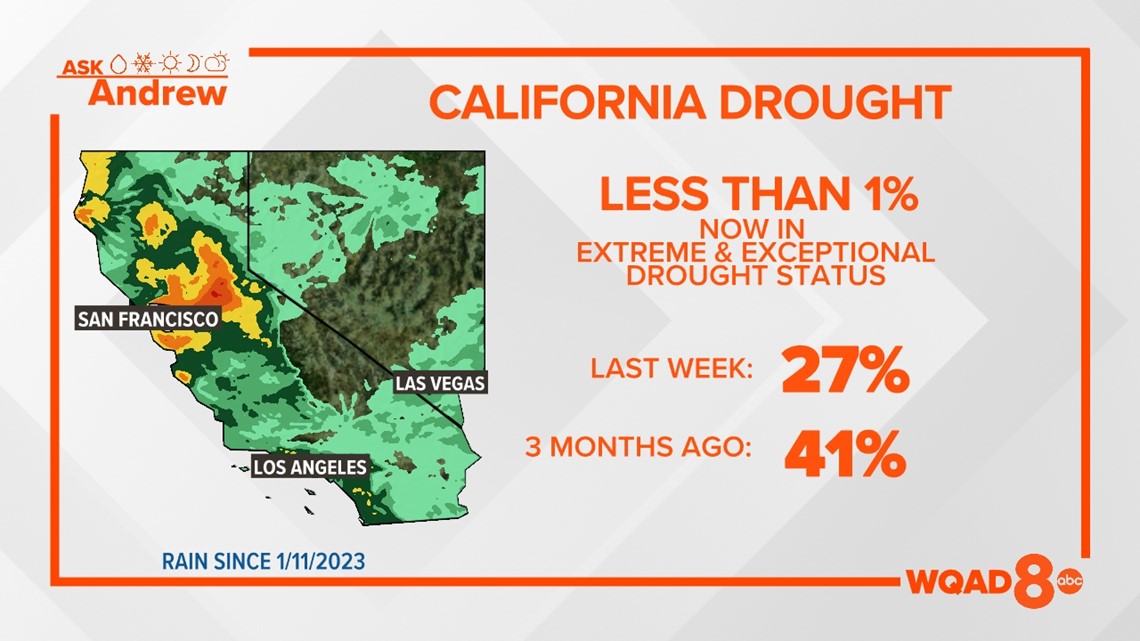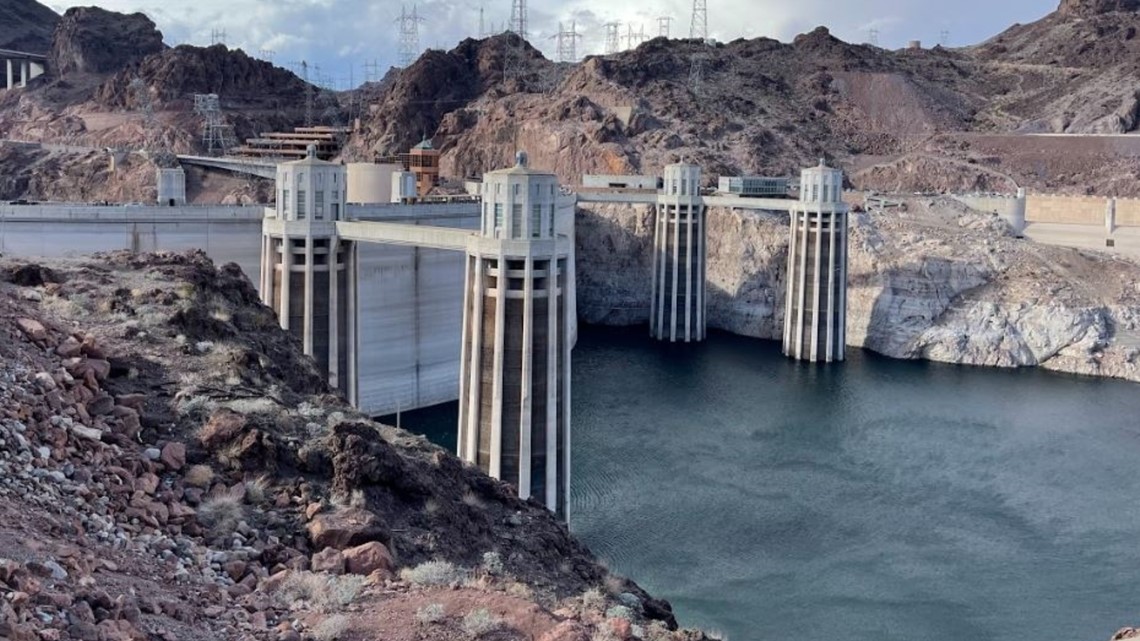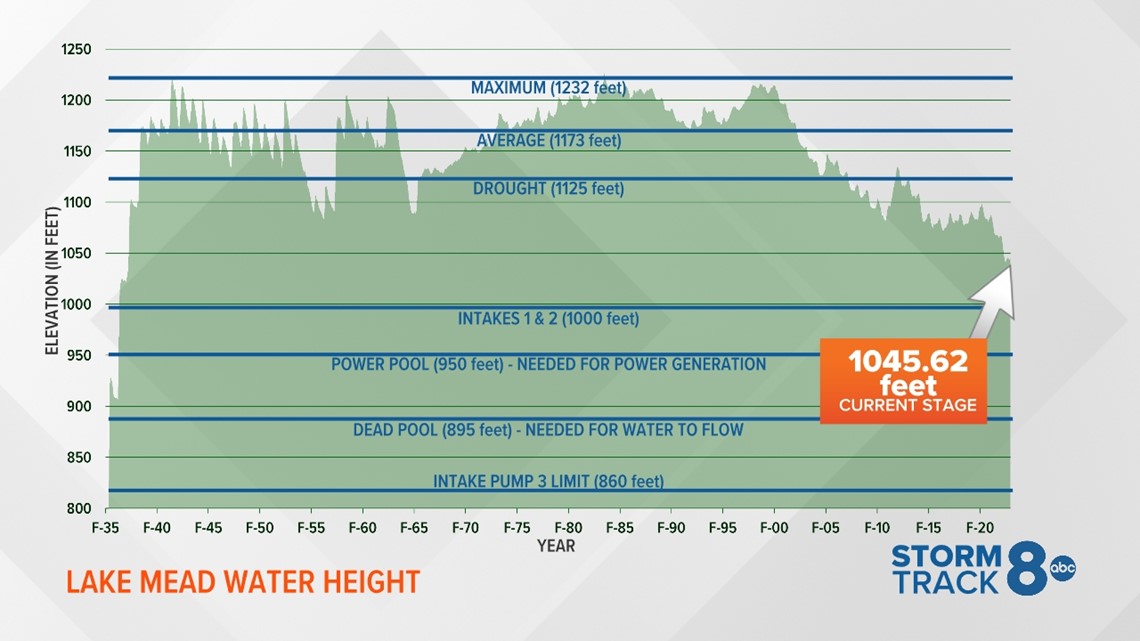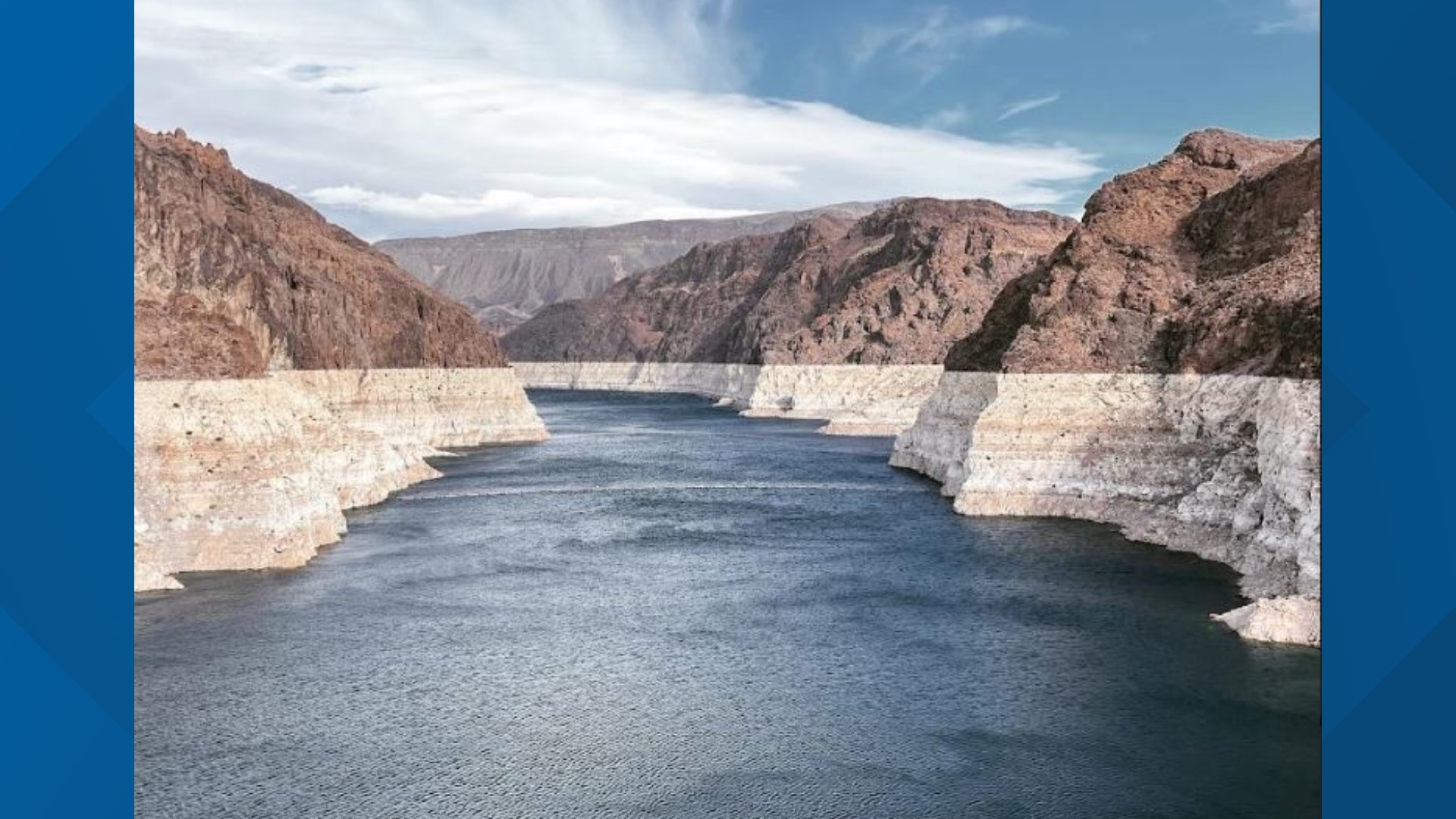MOLINE, Ill. — A truly remarkable weather event is unfolding along the western half of the United States as an atmospheric river, or series of strong storm systems has led to a rapid decrease in both the severity and coverage of drought throughout states like California and Nevada.
You've likely seen the headlines recently that include reports of mudslides and flash flooding as these areas have picked up nearly a year's worth of rain in just a few weeks. In total, nearly 32.6 trillion gallons of water have fallen over this region since mid-December. That leads us to this week's question.
Will all of the rainfall out west help with water shortages?
There is some good news in the short term when it comes to ongoing water shortages, but there remains some bad news as well. Most of the rain and snow has fallen west of the Sierra Nevada mountain range, which does not help replenish Lake Mead or Lake Powell, the two biggest water reservoirs in the nation.
However, there has been some major progress when it comes to the level of drought that is now observed across a good portion of the region. For example, at present time, less than one percent of the state of California is deemed to be in extreme or exceptional drought, the worst drought-ranking status.


Last week, more than a quarter of the state was listed as being in extreme or exceptional drought. Three months ago, almost nearly half the state was ranked as being in the worst drought status.
Experts say it will take multiple seasons of 120% to 200% of normal rainfall and snowfall to end the drought in the West. In an interview with ABC News, Nate Stephenson, a scientist emeritus with the U.S. Geological Survey's Western Ecological Research Center, says snowfall is better than rain because it melts slowly, creating a "water bank" for the spring and summer seasons. Other experts say that the badly needed rainfall might prevent a state-wide tree die-off.


Lake Mead, for example, would absolutely benefit from at least a few more above-average seasons of both rain and snow, especially in the Colorado River Basin region which feeds the lake. Currently, the lake water sits at a stage of 1,045.62 feet. This level is based on elevation, not the height of the Hoover Dam, for those keeping track of the math at home.


The lake has seen some modest rise lately thanks to the added rainfall, but more is desperately needed. In order to keep generating power, the lake must maintain a level above 950 feet. Anything below that, and issues arise not only with power generation, but the water supply as well.
So, in summary, yes, the recent wet pattern will certainly help with the ongoing water shortages. However, more rain and snow are still needed, especially further inland and at points east of the Sierras.
Have a question you would like me to answer for an upcoming Ask Andrew segment? Submit it, here.

